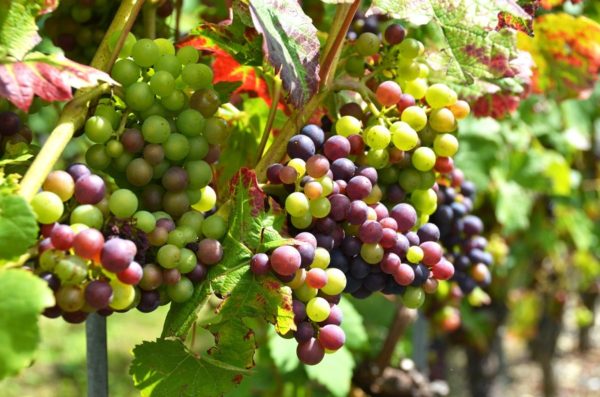Even experienced growers find that the season is coming to an end, and on the vine there are still immature clusters of grapes. What is the reason, how to avoid this in the future and what to do with unripe berries in the present? Let's try to figure it out.
Table of contents
Causes of Unripe Grapes
There are several reasons for the berries to ripen. Let's take a closer look at each.
The variety is selected without regard to growing conditions.
Before planting any variety, it is necessary to specify whether this variety is suitable for growth in this region in terms of aging and climatic conditions. It happens that the vine simply does not have enough time and warm weather for full aging.
During the period of grape growing, the most important factor affecting the yield and taste of fruits is temperature. As far as the temperature of the air and the soil is appropriate, the yield will ultimately be productive. Deviations from acceptable norms negatively affect the growth and ripening of berries.
One of these techniques is planting vines near brick fences or the walls of houses located on the south side.The secret lies in the fact that during the day the masonry heats up well in the sun, and at night it gradually gives off heat to the vines.
Another method for raising the temperature is the use of black mulching materials, which are laid out between the rows and bushes of grapes. The use of black stones, laid out under the bushes. All these materials serve as a kind of heat accumulators.
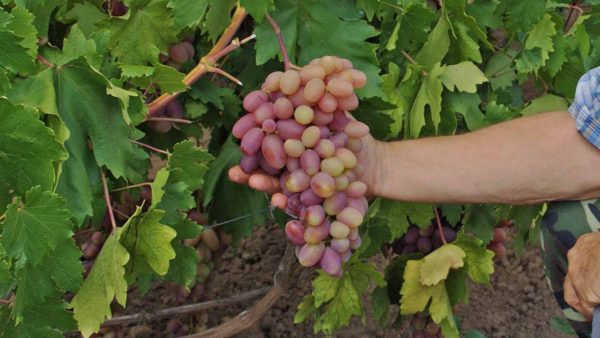
The winegrowers of the northern regions have their own interesting ideas. They use large, rugged black bags filled with hot water. Such bags, arranged between rows of grapes on both sides, are capable of raising the temperature of the soil and air by 5 degrees.
In addition, if the temperature exceeds 30 degrees at the time of flowering, the pollen becomes sterile and unsuitable for fertilization.
Overloading vines with fruits
This may be the second cause of crop immaturity. When the ovaries of the fruit are larger on the vine than it is able to provide with the necessary microelements, this problem is observed. This applies to table grapes. Such varieties require fruit normalization. If you do not carry out the valuation of fruits, then the harvest will not only not reach maturity, but later the bush will be exhausted, the plant will not be prepared for wintering.
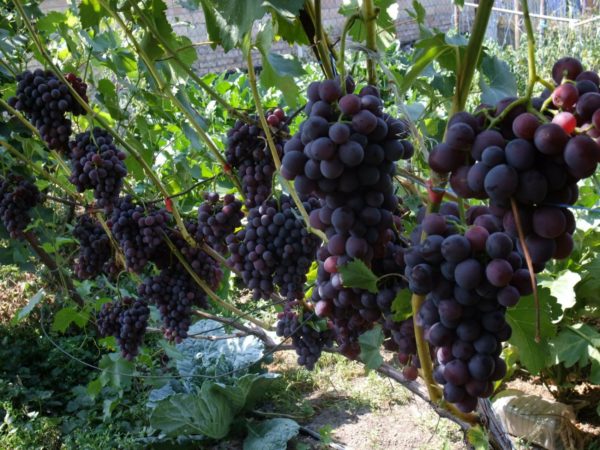
Pests and diseases
Also can be another reason for poor ripening. In diseases mainly affects the green mass of the bush. At the same time, the diseased leaves start to dry and fall off. The loss of green mass leads to the fact that slows down the process of photosynthesis. This produces a very small amount of nutrients, which slows the growth of shoots, and therefore, the period of ripening of fruits is delayed.
Excess nitrogen
With abundant nitrogen fertilization, there is a rapid development of shoots and the root system of the bush. This reduces the number of fruits, the period of ripening of berries is delayed and the taste is deteriorating.
Weed plants
Also can cause poor ripening. To determine their presence is simple. Vines begin to entangle the grass and pull out all the juice from them. It is necessary to regularly weed weeds, which pull nutrients from the soil and limit the access of sunlight to the fruit.
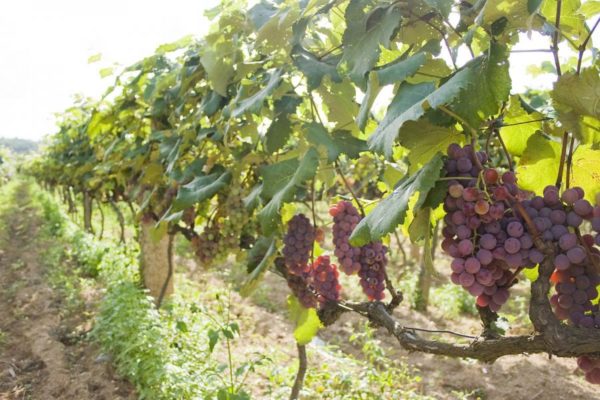
Crop normalization: how and when to use
The yield can be normalized before the beginning of the flowering period. It is necessary to visually assess the number of inflorescences on individual shoots. Then you should completely or partially remove a certain number of inflorescences. If this procedure is carried out at an early date, then all the nutrients will flow to the left clusters.
The bush will not spend extra strength on the clusters, which will then have to be removed.
The following solution will be more reasonable:
- on the adult vine to conduct early normalization during the formation of inflorescences;
- for younger vines, normalize at the end of the flowering period, when the result will be visually visible.
Normalization is recommended, given the workings of experienced winegrowers. It is noticed that one well-developed escape length of 1.5 meters is able to provide with nutrients a bunch weighing no more than 500 grams.
- on table varieties with large hearths, where the mass of each brush is more than 750 grams, leave 1 brush to escape;
- for table varieties with a brush weight of 500 grams, two brushes are left on one shoot;
- in technical varieties, where the weight of the brush 210 grams is set aside on one shoot of 3-4 brush;
- on varieties where the brush mass of more than 1500 grams leaves one brush to escape, and on every third brush all clusters are removed.
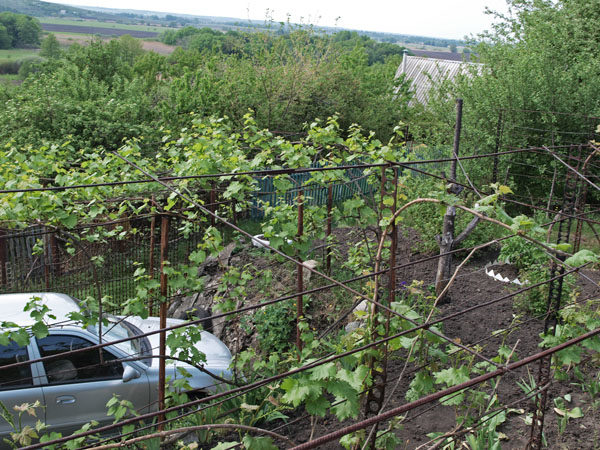
Ripening in polycarbonate
One of the modern methods of solving this problem is the method of constructing polycarbonate shelters, in which the ripening of the immature vine in the autumn period takes place. The essence of this method is as follows:
- it is necessary to dig a trench and lay the bottom of the polycarbonate;
- cut thin shoots;
- Lay the vine in a trench and cover it with a polycarbonate sheet.
This design creates a greenhouse effect inside and retains heat for a long time. This allows the vine to fully ripen. If there is no polycarbonate, black polyethylene can be used.
Chasing
One of the methods of accelerating the ripening of the vine is chasing. This procedure is to remove the tops of shoots grown to 1.5 meters. After pruning begins active intake of micronutrients to the adult part of the bush. This leads to lignification of the vine, which helps to successfully survive the winter.
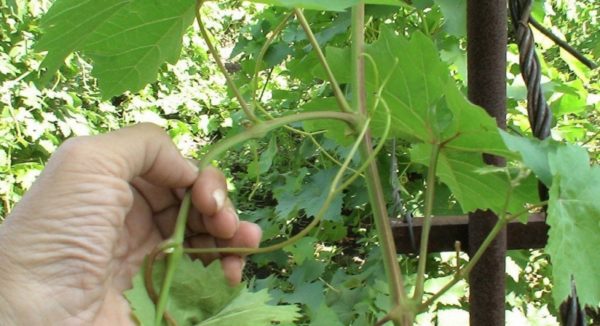
Harvesting a piece of unripe harvest
Accelerate the aging process by collecting part of the crop. If the crop does not ripen within a certain period, it is necessary to leave one bunch on each shoot. Extra clusters need to be removed from the shoot, or to remove some of the berries on the brush. You can remove not only unripe berries in the bunch, but also those that are spoiled by wasps or dried out.
Important! For ripening the vine enough to clean one fifth of the brushes.
Application of unripe grapes
Do not rush to throw out unripe grape clusters with pits. They can find a very extensive use and make a lot of blanks at home:
- make wine;
- cook jam or jam;
- pickle;
- cook the sauce;
- boil the juice.
Making wine
It is necessary to peel the unripe brushes in a metal container (the container should be enameled. Aluminum or copper utensils are not allowed). Berries need to be well mashed. The resulting pulp should be heated on fire to 60 degrees, remove from heat, cool to 25 degrees, fold in a colander and squeeze the juice. If the juice is sour, sugar and berry yeast are added to it.
Fermentation should be carried out at a temperature of 20 degrees for a month. After two months, the wine brightens and a precipitate forms at the bottom. Carefully drain the wine, leaving the sediment in the tank. The wine will be unpleasant to the taste and sweets will not be felt in it. At this point, you need to add sugar at the rate of 100-150 grams per 1 liter, stir until sugar is completely dissolved. Then bottle it. Dessert wine is recommended to stand at room temperature for two months before use.
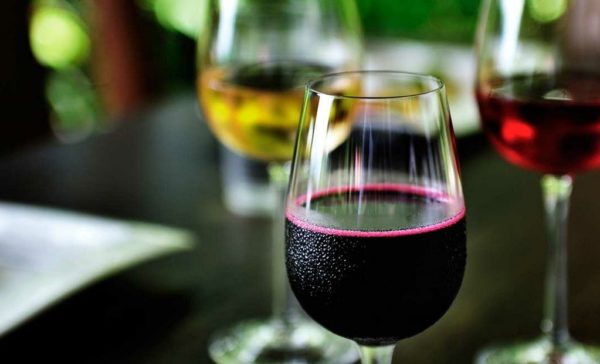
How to make jam and jelly
To make jam, you need the following ingredients:
- grapes - 1 kilogram;
- sugar — 0.8 kilogram;
- water — 300 grams;
- vanillin — 1 gram.
Cooking method:
- To sort grapes, to wash, to lay out on a colander, until complete runoff of water;
- Dip berries in boiling water for 1 minute, then dip in ice water, wait until water runs out;
- Prepare a syrup, boil it for two minutes, lay berries in it, remove from the heat for 6 hours.
- After 6 hours, put the container with the grapes on the fire, bring to a boil and boil for ten minutes. Remove from heat and set aside for eight hours.
- After eight hours, the grapes are boiled again for ten minutes, set aside for eight hours;
- After this period of time, they boil again for 10 minutes, put vanilla, lay out in sterile jars and roll.

Homemade juice from unripe berries
Ingredients:
- grapes — 3 kilograms;
- sugar — 200 grams.
Cooking method:
- Berries are washed, thrown back in a colander, allowed to drain water;
- Grind in a meat grinder;
- The resulting mass is ground through a sieve and fold the pulp separately;
- Squeeze through gauze, add cooled boiled water, at the rate of: per ten kg of mash one liter of water;
- Squeeze and mix the resulting juice with the rest of the juice;
- Put the container on the fire and pasteurize it for 15 minutes at a temperature of 80 degrees. Do not bring to a boil;
- Add sugar, bring to a boil, pour into sterile jars and roll up.
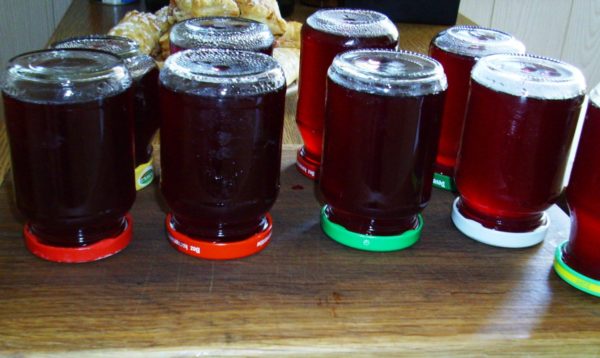
How can I cook the sauce for meat
Ingredients:
- grapes — 0.5 kg;
- cilantro — 1 bundle;
- garlic - 2 cloves;
- salt to taste
Cooking method:
- knead not ripe grapes with a wooden pestle;
- squeeze the juice;
- crushed garlic, cilantro and salt mix with juice;
- bring to a boil and cool to room temperature.
Use almost ripe berries as a seasoning for meat, fish and seafood.
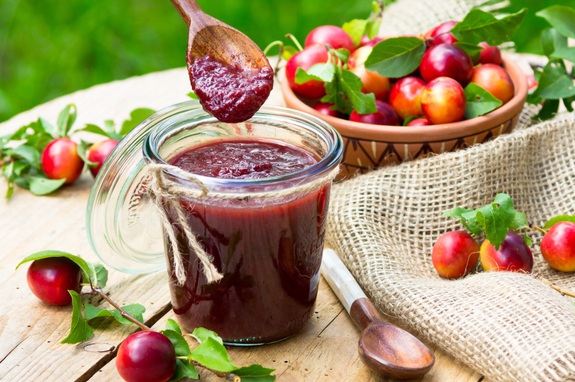
Unripe Berry Vinegar
Knead immature grapes, squeeze the juice and pour into plastic bottles. Do not fill up to the top of the bottle 8-10 cm. Close the bottle tightly and put in a warm place or in the sun for a month and a half.A month later, gently open the bottle and remove the sample.
Open the bottle carefully, as the effect will be like that of sparkling water. It turns out a neutral, very delicate taste. Isabella ripe grapes are not suitable for this purpose, as mature grapes will make wine.
Even immature grapes can be used. You can make jams, jellies from it, you can marinate and make jam from it.
